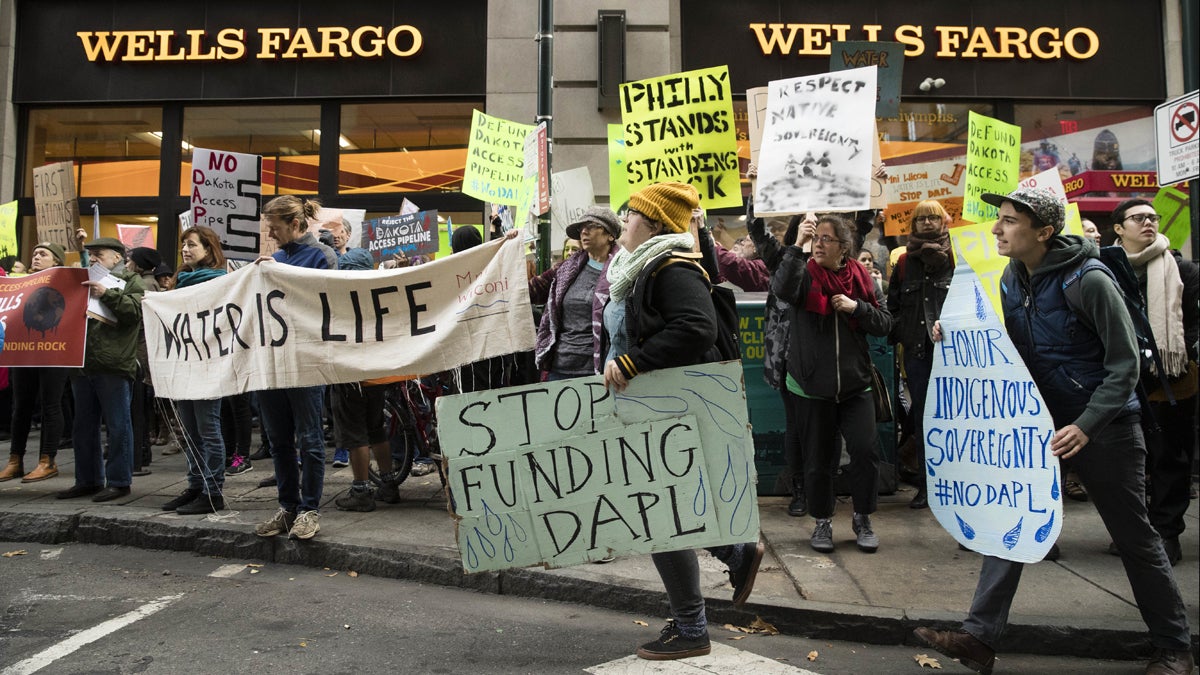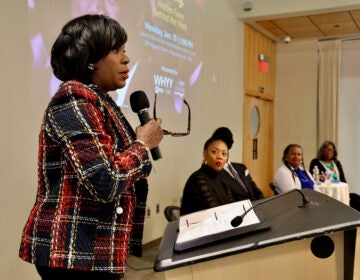What will Trump presidency mean for the New American Indian Movement

Protesters demonstrate in solidarity with members of the Standing Rock Sioux tribe in North Dakota over the construction of the Dakota Access oil pipeline
On April 1, 2016, the centuries-old struggle for the rights of indigenous Americans witnessed a new dawn.
On that day, LaDonna Bravebull Allard, an elder member of the Standing Rock Sioux tribe, founded the Sacred Stone Camp in protest of the planned Dakota Access Pipeline. Since its announcement, this pipeline has been a source of tremendous controversy as it is set to run through and potentially endanger the Missouri River, from which the Standing Rock Reservation in North Dakota draws its water supply. Also, it will desecrate the Sioux’s sacred burial grounds.
Since that time, tribes of indigenous peoples from throughout the Americas have coalesced with concerned individuals of all ethnic and cultural backgrounds as “water protectors” at the Sacred Stone Camp.
The movement to stop this pipeline has seen the greatest single gathering of Native American tribes in the past 100 years. It is also the greatest alliance of as many such tribes since the legendary American Indian Movement, established during the Civil Rights era. Protectors at the Camp have been met by militarized police forces armed with “tear gas, rubber bullets, and sound cannons” according to Mother Jones account.
During a confrontation with police on the site this week, Sophia Wilanksy, a Standing Rock activist who was reportedly distributing water to others at the scene, was struck directly by a concussion grenade and hospitalized. Wilansky is facing the possible amputation of her arm because of her injuries. Police deny responsibility for the incident.
In Philadelphia, activist groups and other citizens have been working in solidarity with the protectors in North Dakota to help stop the construction of the disputed pipeline. On Tuesday, Nov. 15, an estimated 400 in Center City stopped traffic on JFK Boulevard in peaceful protest. Similar solidarity actions have been taking place through the efforts of local coalition chapters since the formation of the Sacred Stone Camp.
No doubt due in part to these combined forces nationwide, on Nov. 15, the Army Corps of Engineers announced it is placing a temporary halt on the construction of the DAPL. But the fight to stop the pipeline is in no way over. Now, this newfound front of the Indigenous people’s struggle is faced with the same grave challenge as the greater struggles for environmental protection and racial and cultural justice: the election of Donald Trump as the 45th president of the United States.
The new guard and the pipeline
According to Greenpeace, the president-elect has an estimated $500,000 to $1 million invested in two of the fossil fuel companies which are directly funding the contested DAPL, including Energy Transfer Partners.
Activists against the pipeline have expressed serious concern that this conflict of interest in the incoming administration will mean the Army Corps of Engineers’ decision to halt construction will be undermined and ultimately overturned. Mother Jones reported that in the week after the election, ETP’s stock price rose from $33.37 to $38.68. Just as Trump is profiting from the pipeline, so the pipeline has profited from Trump.
Greenpeace reports that in fact Trump is heavily invested in the fossil fuel industry, listing among his other oil company interests Halliburton, ExxonMobil, Shell, Kinder Morgan, and many others. And these are just the ones the president-elect has disclosed.
The environmental NGO goes on to express concern about the position of the billionaire Harold Hamm as Trump’s top energy adviser. Hamm is the CEO of the country’s largest natural gas company, Continental Resources.
While not commenting on the DAPL directly, Trump has shown his commitment to the oil industry by vowing to remove government oversight of fossil fuel infrastructure projects and to reestablish construction of the Keystone XL Pipeline, which President Obama halted earlier this year.
Human rights and the business of politics
The Obama administration’s posture toward the DAPL opponents at Standing Rock has been diplomatic but unassertive. In an interview with NowThis earlier this month, President Obama stated, “My view is that there is a way for us to accommodate sacred lands of Native Americans …. And I think that right now the Army Corps is examining whether there are ways to reroute this pipeline. We’re going to let it play out for several more weeks and determine whether or not this can be resolved in a way that I think is properly attentive to the traditions of First Americans.”
The remarks showed the president’s characteristic prowess in the art of political rhetoric. As he has done with prior questions of the civil rights of the LGBT community, Obama referred to his personal “view” while not taking any administrative allegiance that would affect policy. Meanwhile he implied that the government would allow conflicts between the indigenous rights activists and police on the scene to continue uninterrupted “for several more weeks,” and added that the government was in the process of determining “whether or not” it should observe the rights of the Sioux people. In September, Democracy Now famously filmed anti-pipeline activists being attacked by police dogs.
Meanwhile, U.S. Senator and former presidential candidate Bernie Sanders has taken the side of the activists in the dispute. Last month, Sanders penned an open letter to President Obama urging him to protect the First Amendment rights of the protesters, remove the military forces from the site, and suspend all federal permits to the pipeline until a “full environmental and cultural review” has been completed.
The combined militarism, racism, and predilection toward protecting the interests of overblown businesses on the part of the incoming president mean that he stands to be more damaging to the cause of the Native Americans than his predecessor. More figures in legislative positions such as Sanders will have to take a strong stance on the situation in North Dakota in order to quell the tide of a new, more self-concerned, and potentially less accountable executive administration. If the personal dealings of Trump and his associates are not met with resistance at a high level, they risk breaking the new coalition of Native peoples before it even gets off the ground.
WHYY is your source for fact-based, in-depth journalism and information. As a nonprofit organization, we rely on financial support from readers like you. Please give today.




